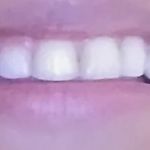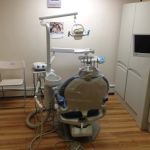Symptoms of Gum Disease and How to Treat It
As someone who has been through the frustrating and sometimes painful experience of gum disease, I understand how important it is to be proactive when it comes to oral health. Gum disease, or periodontal disease, is a serious condition that affects many people worldwide, but unfortunately, many of us ignore the early signs until the situation worsens. In this article, I’ll walk you through the symptoms of gum disease, what causes it, and the best ways to treat and prevent it. Whether you're already experiencing symptoms or just want to learn more, this guide will help you understand the condition and the steps you can take to protect your teeth and gums.
1. Early Symptoms of Gum Disease
Gum disease typically starts with gingivitis, a milder form of the disease that is reversible if treated early. It occurs when plaque—a sticky film of bacteria—builds up on the teeth and gums. Here are the early symptoms of gum disease that you should be on the lookout for:
- Red, Swollen Gums: One of the first signs of gum disease is red, swollen gums that may be tender to the touch. Healthy gums should be firm and pink, so any signs of inflammation should be taken seriously.
- Bleeding Gums: If your gums bleed when brushing or flossing, it’s a strong indicator of gum disease. This happens because the bacteria in plaque irritate the gum tissue, leading to inflammation and bleeding.
- Bad Breath: Persistent bad breath or a bad taste in the mouth can be a symptom of gum disease. The bacteria that cause gum disease can emit foul-smelling toxins that lead to bad breath.
I remember the first time I noticed these symptoms. My gums would bleed every time I flossed, and I thought it was just a result of flossing too aggressively. But as the symptoms persisted, I realized I needed to take action. Don’t ignore these signs—getting treatment early can save you from more serious dental issues down the road.
2. Advanced Symptoms of Gum Disease
If left untreated, gum disease can progress to a more severe form called periodontitis. This stage can cause irreversible damage to the gums, bone, and tissue that support your teeth. Here are some of the more advanced symptoms of gum disease that indicate the need for immediate professional intervention:
- Receding Gums: When your gums pull away from your teeth, it exposes more of the tooth surface. This can lead to tooth sensitivity and increase the risk of tooth decay and infection.
- Loose Teeth: Gum disease can weaken the bone structure that holds your teeth in place, causing them to loosen. If you notice that your teeth feel unstable or if they shift position, it could be a sign of severe gum disease.
- Pus Between Gums and Teeth: Pus or a bad taste between the gums and teeth is a serious indication of infection. If you notice pus, it’s important to see a dentist immediately.
One of my friends once experienced a loose tooth because of untreated gum disease. It was a shocking and painful experience, but it taught me how important it is to seek professional help as soon as advanced symptoms appear. The earlier you catch the problem, the more likely you are to save your teeth.
3. Causes of Gum Disease
Gum disease is primarily caused by poor oral hygiene that allows plaque to build up on the teeth and gums. However, there are several other factors that can increase the risk of developing gum disease, including:
- Smoking or Chewing Tobacco: Tobacco use is one of the biggest risk factors for gum disease. It weakens the immune system, making it harder for the body to fight off infections in the gums.
- Genetics: Some people are more genetically predisposed to developing gum disease. If your family members have had gum disease, you may be at a higher risk.
- Medical Conditions: Certain health conditions, such as diabetes, make it more difficult for your body to fight infections, including gum disease.
- Poor Nutrition: A diet lacking in essential nutrients, such as vitamin C, can make you more susceptible to gum disease. A healthy diet plays a crucial role in maintaining good oral health.
When I first realized that I might have gum disease, I also looked into the factors that contributed to my condition. It turns out that my inconsistent oral hygiene routine and a recent illness had weakened my gums. It’s important to not only focus on treating gum disease but also on addressing the factors that may be contributing to it.
4. How to Treat Gum Disease
If you suspect you have gum disease, the first thing you should do is visit your dentist for a thorough examination. Early-stage gum disease, gingivitis, can usually be treated with good oral hygiene, professional cleanings, and possibly an antimicrobial rinse. Here are some of the common treatments for gum disease:
- Professional Cleaning: A dentist or dental hygienist will remove plaque and tartar from your teeth and gums. This is often the first step in treating gum disease.
- Scaling and Root Planing: If gum disease has progressed to periodontitis, you may need a deep cleaning called scaling and root planing. This procedure removes tartar from below the gum line and smooths out the roots of your teeth to help your gums reattach.
- Antibiotics: In some cases, your dentist may prescribe antibiotics to help reduce infection and inflammation in your gums.
In my own experience, I had to undergo scaling and root planing after my dentist diagnosed me with early periodontitis. Although the procedure was a bit uncomfortable, it was effective in restoring my gum health. If you have gum disease, don’t be afraid to seek professional help—early intervention can prevent more serious complications.
5. Preventing Gum Disease
The best way to treat gum disease is to prevent it in the first place. Here are some steps you can take to protect your gums:
- Brush and Floss Regularly: Brush your teeth at least twice a day with fluoride toothpaste and floss daily to remove plaque and food particles from between your teeth and along your gum line.
- Use Antimicrobial Mouthwash: Mouthwash can help kill bacteria and reduce plaque buildup, especially in areas that are hard to reach with brushing and flossing.
- Visit Your Dentist Regularly: Regular dental checkups and cleanings are essential for catching early signs of gum disease and preventing it from progressing.
Ever since my gum disease treatment, I’ve become much more diligent about my oral hygiene routine. Regular dental visits and maintaining good habits at home have helped me keep my gums healthy and avoid further issues. Prevention really is the key to good oral health.
If you are dealing with gum disease or want to learn more about how to keep your gums healthy, I highly recommend scheduling a consultation with a professional. For more information or to book an appointment, visit Dentistry Toothtruth.







 Dr. May P. Chu, DDS5.0 (161 review)
Dr. May P. Chu, DDS5.0 (161 review) Onsite Dental4.0 (21 review)
Onsite Dental4.0 (21 review) Gentle Dental Lakewood4.0 (183 review)
Gentle Dental Lakewood4.0 (183 review) Piedmont Periodontics4.0 (34 review)
Piedmont Periodontics4.0 (34 review) Nanuet Family Dentistry: Dr. Srinivasa5.0 (2 review)
Nanuet Family Dentistry: Dr. Srinivasa5.0 (2 review) Rumack and Harmer Pediatric Dentistry5.0 (11 review)
Rumack and Harmer Pediatric Dentistry5.0 (11 review) The Importance of Oral Health Education During Pregnancy for a Healthy Pregnancy
The Importance of Oral Health Education During Pregnancy for a Healthy Pregnancy Best Tips for Brushing Your Teeth Properly for Healthy Gums: Essential Techniques for Oral Health
Best Tips for Brushing Your Teeth Properly for Healthy Gums: Essential Techniques for Oral Health Why Skipping Dental Checkups Can Lead to Bigger Oral Health Problems
Why Skipping Dental Checkups Can Lead to Bigger Oral Health Problems Advantages of Porcelain Dental Restorations
Advantages of Porcelain Dental Restorations How Can Diabetes Cause Tooth and Gum Problems? Preventing and Managing Oral Health Issues
How Can Diabetes Cause Tooth and Gum Problems? Preventing and Managing Oral Health Issues Healthy Habits for Promoting Good Oral Health and Hygiene: Tips for a Healthy Smile
Healthy Habits for Promoting Good Oral Health and Hygiene: Tips for a Healthy Smile